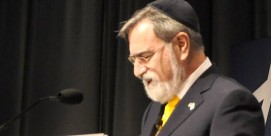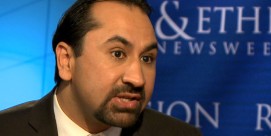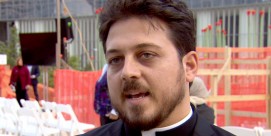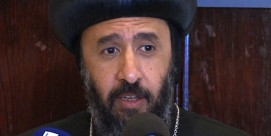Sacred Space
BOB ABERNETHY, anchor: As survivors of the 9/11 attacks dealt privately with their grief these past months, some of them, and many others, have asked and argued about what should happen now at ground zero. Part of that debate has involved the idea of sacred space. What is it? What spaces qualify as sacred? Deryl Davis talked with scholars and others about ground that is considered holy.
DERYL DAVIS: It looks like a construction site: the gigantic crater where the twin towers of the World Trade Center once stood.
But that’s not how Monica Iken sees it. Her husband, Michael, died here along with 2,800 others, many of whose remains have never been recovered.
MONICA IKEN: Their spirit, their whole being is in that space, so that makes it sacred, because that’s where they gave up their lives. It is a cemetery without tombstones.
DAVIS: It’s also one of the most highly contested commercial properties in the world. Over the past year, Iken has campaigned to see that developers don’t build over the entire site, especially the footprints or foundations of the towers. She wants them preserved as a sacred memorial.
Ms. IKEN: The most important thing for myself is to be able to stand on Tower 2’s footprint — just to be able to stand where my husband once stood and honor his last day here.
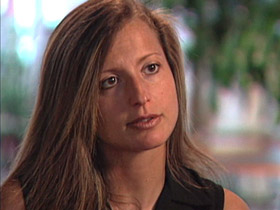
DAVIS: But making that happen may not be easy when so many interests are at stake. On her Web site, Iken calls for the help of spiritual leaders, among others, but she claims their voices have been noticeably absent.
Ms. IKEN: I’ve been asking the religious communities to help me define that space. Why is it not sacred and hallowed space, and what constitutes that? And no one has been able to come forward to say it is or it isn’t.
DAVIS: Perhaps that’s because there’s no consensus among religious traditions on what makes a place sacred.
Dr. JOAN BRANHAM (Art History Professor, Providence College): Sacred space is not a static, unchanging concept. It changes in fact over time, depending on the different culture, different time, different place.
DAVIS: Joan Branham teaches on the subject at Providence College in Rhode Island.
Dr. BRANHAM: One of the criteria for sacred space according to traditional scholarship is that there has been a divine manifestation in our everyday world. This, of course, for the three western traditions in the world, has happened in Jerusalem several times.
DAVIS: For Christians, the Church of the Holy Sepulchre, traditional site of Jesus’ burial and resurrection, is sacred ground. For Muslims, it’s the Dome of the Rock, where the prophet Muhammad ascended into heaven. And for Jews, it’s the area associated with the second temple, including the Temple Mount.
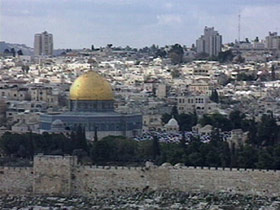
Rabbi IRVING GREENBERG: Within Jerusalem. the Temple Mount was the most sacred, and within the Temple Mount, the so-called “Holy of Holies” there was one place where God’s presence was so manifest that no one was allowed to walk in there.
DAVIS: Another aspect commonly associated with sacred space is death.
Dr. STEPHEN PROTHERO (Boston University): Death is sacred, death is the moment of connection with God or with divinity. So we see that process in many religious traditions.
DAVIS: Cemeteries are hallowed places for Christians, Jews, and Muslims. Hindus burn their dead and pour their ashes into the sacred Ganges River. In Catholicism, Islam, and other traditions, the ground is consecrated by the blood of martyrs. The Vatican in Rome is built on one of the most famous of these sites, where Saint Peter died for his faith.
Dr. BRANHAM: Martyrdom has played a significant role in defining sacred space, where an innocent life that stood for a particular ideal was lost or was murdered for that ideal, and that site then becomes a place of pilgrimage.
DAVIS: In modern times, the concept of martyrdom has been extended to those who die for an important cause, whether it’s religious or not. The battlefield at Gettysburg is sacred to many Americans because so many men died there for a noble purpose.
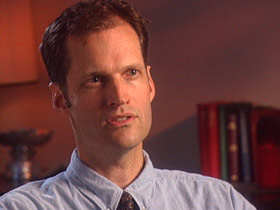
Dr. PROTHERO: Gettysburg, of course, is a place where the two types of death associated with sacred space come together — sacred space as a place where deaths occurred and sacred space as a place where bodies are interred. When Lincoln gives his Gettysburg Address he says, you know, “Nothing I can say will make this place sacred because this place is made sacred by the actions of the heroes who died here.”
DAVIS: Those words will be heard again on September 11 during memorial services in New York City.
Dr. PROTHERO: This, in a way, is our Gettysburg for our generation. This is the place that we are going to remember of mass death where Americans responded to an attack and in a way defined the character of the country.
DAVIS: Rabbi Irving Greenberg says sacred ground is wherever people are killed because of the values they represent. And the Holocaust illustrates that.
Rabbi GREENBERG: Where the soil itself is suffused with human blood, this becomes the most sacred place, not because of the death but because it dramatizes the life that was sacrificed for this value, for this idea, for this standard. That’s what’s at stake at the World Trade Center or the very notion that the site itself should be a sacred space. Because in a sense it’s not just that they killed 3,000 people there. It’s that they were killed because someone hated democracy, someone hated pluralism, someone hated productivity.
DAVIS: Hatred is what brought down the Murrah federal building in Oklahoma City seven years ago, killing 168 people. Today, plaques declare the site to be “sacred ground,” and religious symbols surround the area.
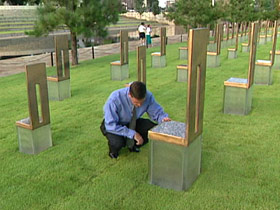
KEN THOMPSON: This is a very spiritual place for me. It gives me a lot of peace in my heart. Every time I come here, God places His hands on my shoulder and walks with me.
DAVIS: Ken Thompson lost his mother, Virginia, here. Now he comes to the memorial to talk to her and to pray.
Mr. THOMPSON: I think that her soul is definitely here. I feel probably more comfortable here than I do at the cemetery where she’s buried.
DAVIS: Thompson hopes the Oklahoma City memorial can be an example for what might take shape in New York City. Here, rows of empty bronze chairs — one for every victim — sit on the footprint of the building in which they died. The memorial fence is covered with symbolic tokens, some religious, some not. Tokens of respect for the dead. People bring them from all over the world.
Dr. BRANHAM: Sometimes a sacred space can be identified by the human response to that particular space. For example, people come to put flowers on a site, light candles on a site, place a cross on a site, come again and again to a site to pay tribute to it.
DAVIS: Scholars call this pilgrimage, and it may be the most important aspect of sacred space, found in nearly all traditions. Many Catholics visit saints’ shrines, where miracles have occurred. Hindus make arduous journeys to places associated with their deities. Able-bodied Muslims are expected to make a pilgrimage — or Hajj — to Mecca, the holiest city in Islam, at least once in their lifetime. It’s a central tenet of their faith. Once in Mecca, pilgrims circle the kabah, or house of worship, believed to have been built by Adam and rebuilt by Abraham. Scholars say pilgrimage often involves rituals, such as prayer and chanting, on sacred ground.
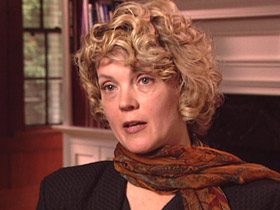
Dr. PROTHERO: The sacred place is the spot where you behave differently. You do something different from what you do when you’re in a supermarket, or when you’re in a library, or when you’re in your own home.
Dr. BRANHAM: One of the other notions around sacred space is, of course, that it is sacred because it is interpreted as being sacred. That is to say, human beings react to that space as if it is a sacred site.
DAVIS: In the days after the September 11 attacks, workers found a cross-shaped T-beam in the rubble of the World Trade Center. Many, like Father Brian Jordan, viewed it as a sign of God’s presence at the site. He led regular worship services under the cross for much of the past year.
Father BRIAN JORDAN (Immigration Services, St. Francis of Assisi Church, New York): That cross is not just a Christian cross, it’s a symbol of faith for all people to realize the presence of God was down there on September 11 and still is.
DAVIS: No decision has been made as to whether the cross will remain in a permanent memorial. But for the time being it stands beside the footprints where it was discovered.
It’s likely to be years before a permanent memorial is built here, and no one knows what shape that memorial will take. But already, the World Trade Center has become a place of pilgrimage for many Americans, and that may determine its meaning and significance for future generations.
Rabbi GREENBERG: It says the last word does not go to the murderers, the last word is not anonymity and forgetfulness, the last word is human memory that not only remembers those who died but steps up and says in their memory, “I’ll make it a better world.”
DAVIS: For Monica Iken, that process begins with a proper memorial — on sacred ground.
Ms. IKEN: I do have a mission. And I thank God every day for giving me the strength to do this, and for giving me Michael, because that’s a real gift.
DAVIS: In New York City, I’m Deryl Davis.


